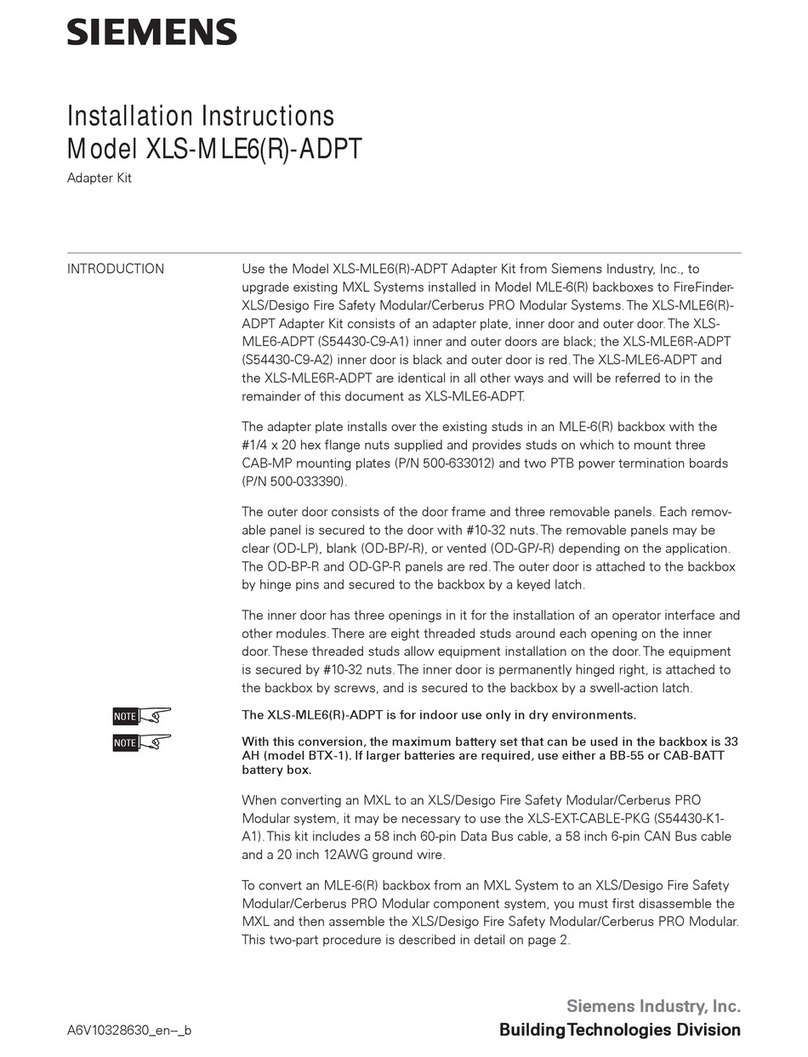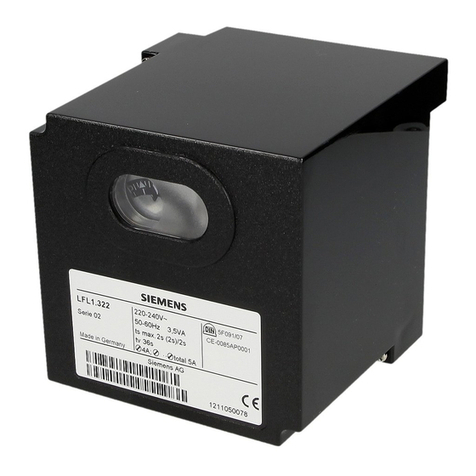2/11
Siemens Building Technologies CC1N7418en
HVAC Products 08.04.2004
Warning notes
To avoid injury to persons, damage to property and the environment, the follow-
ing warning notes should be observed!
Do not open, interfere with or modify the unit.
•All activities (mounting, installation and service work, etc.) must be performed by
qualified staff
•Before performing any wiring changes in the connection area of the LGA..., com-
pletely isolate the burner control from the mains supply (all-polar disconnection)
•Ensure protection against electric shock hazard by providing appropriate protection
for the burner control’s connections terminals
•Check to ensure that wiring is in an orderly state
•Press the lockout reset button / operating button only manually (applying a force of
no more than 60 N), without using any tools or pointed objects
•Fall or shock can adversely affect the safety functions. Such units may not be put
into operation even if they do not exhibit any damage
Mounting notes
•Ensure that the relevant national safety regulations are complied with
•The ionization probe and ignition electrode must be positioned such that the igni-
tion spark cannot arc over to the ionization probe
•The position and polarity of the ignition electrode can adversely affect the magni-
tude of the flame signal. Reversal of polarity of the ignition transformer’s connec-
tions on the primary side usually solves the problem
•Since the burner bars form the earthed counter-electrode, the burner must be ad-
justed such that the flame is hot and stable and in firm contact with the burner bars.
With pulsating flames or yellow-burning flames resulting from lack of air, a very low
or even no ionization current is generated so that the burner control will initiate
lockout
Installation notes
•To isolate the burner control from the mains supply, use an all-polar switch with a
contact gap of at least 3 mm
•Secure the earthing lug in the terminal base with a metric screw and a lockwasher
or similar
•Switches, fuses, earthing, etc., must be in compliance with local regulations; pri-
mary fuse max. 10 A (slow)
•Make absolutely certain that life and neutral conductors are correctly connected to
terminals 1 and 2 of the burner control; otherwise, no flame signal will be generated
•Connect the gas pressure switch and other monitoring devices - whose contacts
must be closed from startup to controlled shutdown - in series with «R» and «W»
•If the fully closed position of the main gas valve «BV2» shall be checked on burner
startup, the closed position contact must be included in the loop between terminals
9 and 3. In addition, the connecting links between terminals 9 and 11 and 8 and 3
must be fitted
•During the startup sequence, terminal 6 carries voltage and may not be used as an
auxiliary terminal
•The auxiliary contact of a gas valve for checking the fully closed position must be
included in the loop between terminals 9 and 3
•During the startup sequence, terminals 9 and 6 carry voltage and may not be used
as auxiliary terminals
•Connect the load controller of 2-stage burners to terminal 5 in series with «BV2»
Siting the ionization
probe
Only with LGA41...
Only with LGA52... /
LGA63...





























